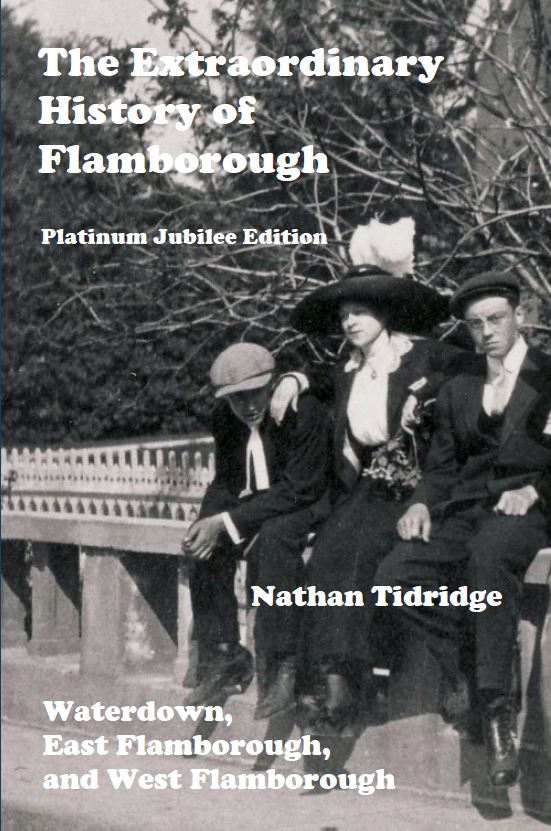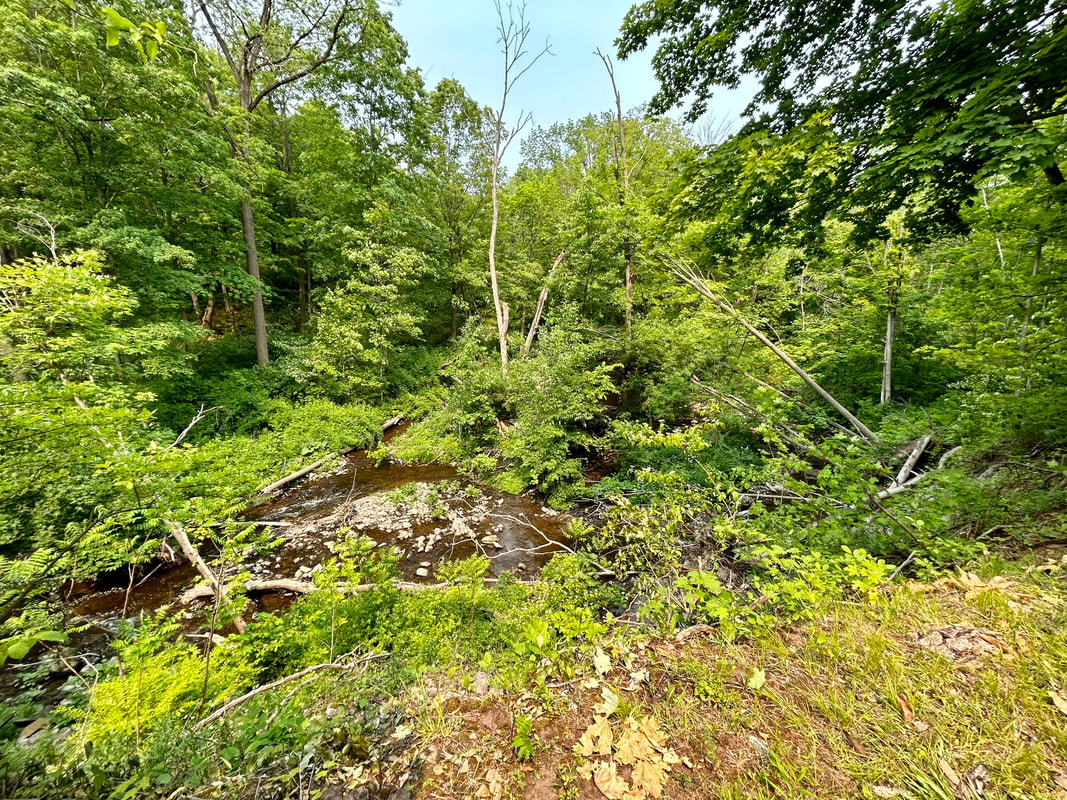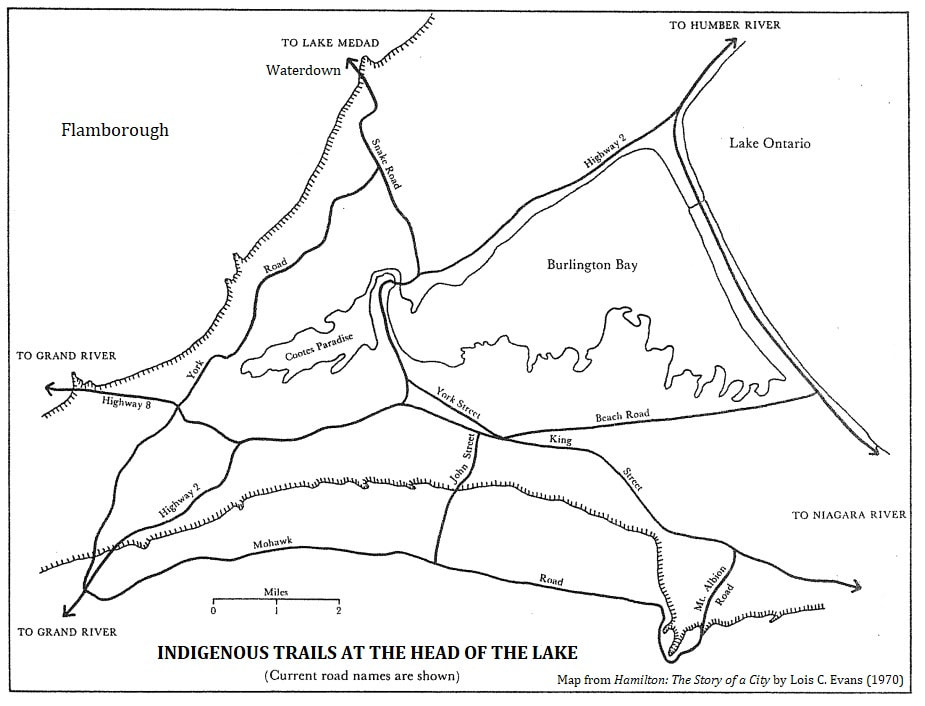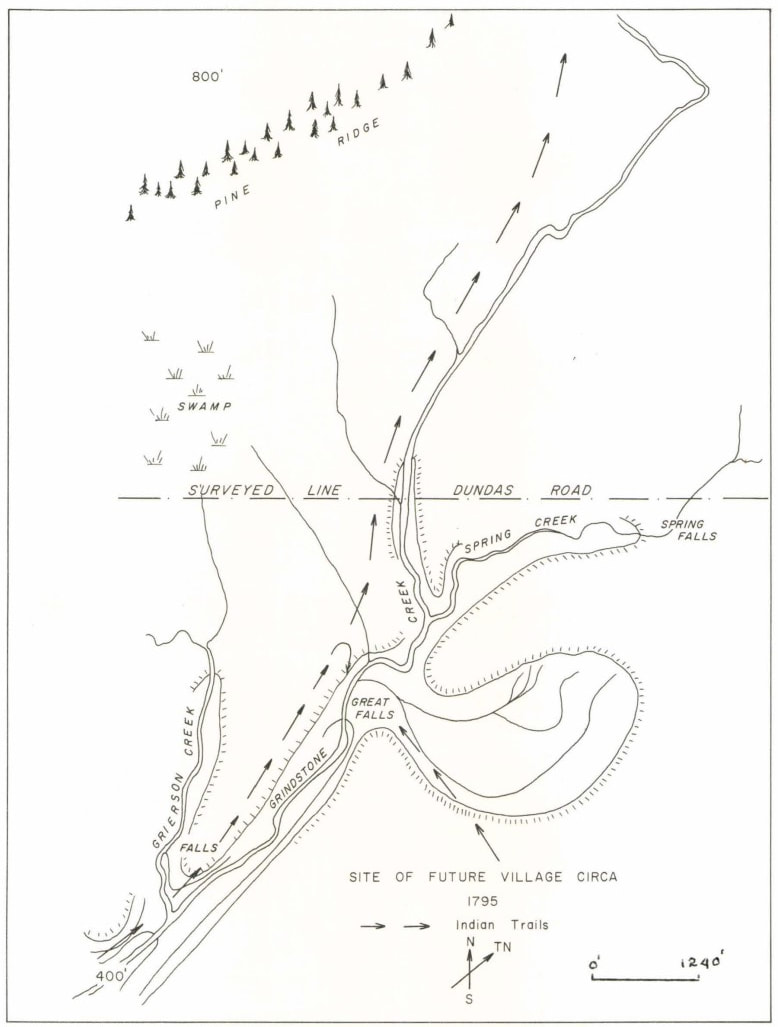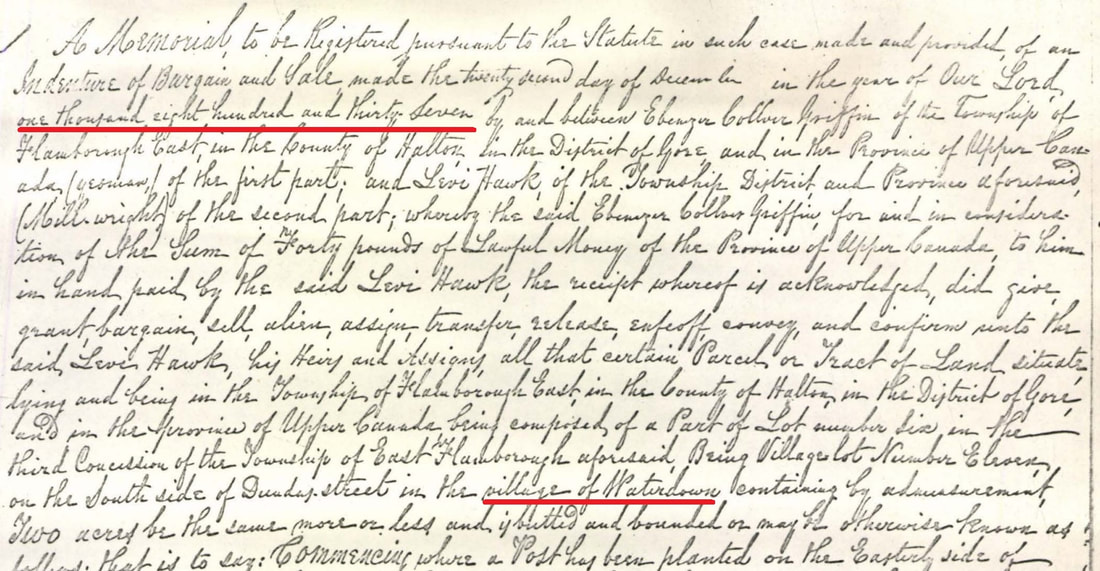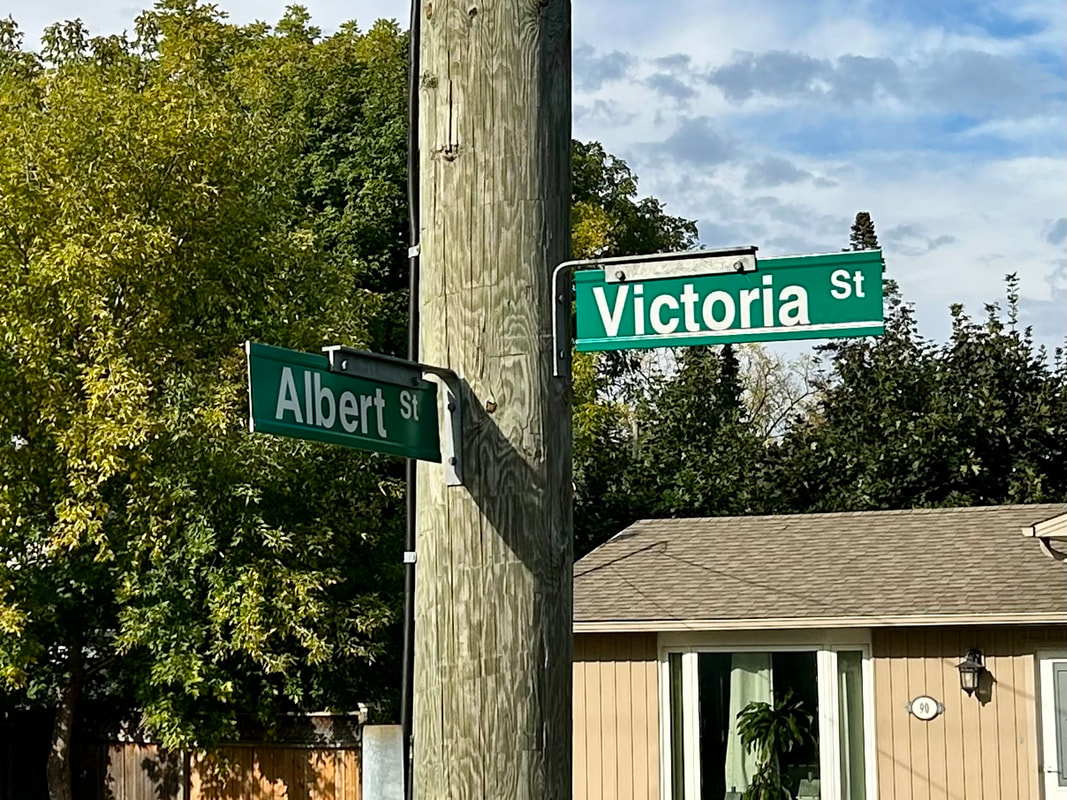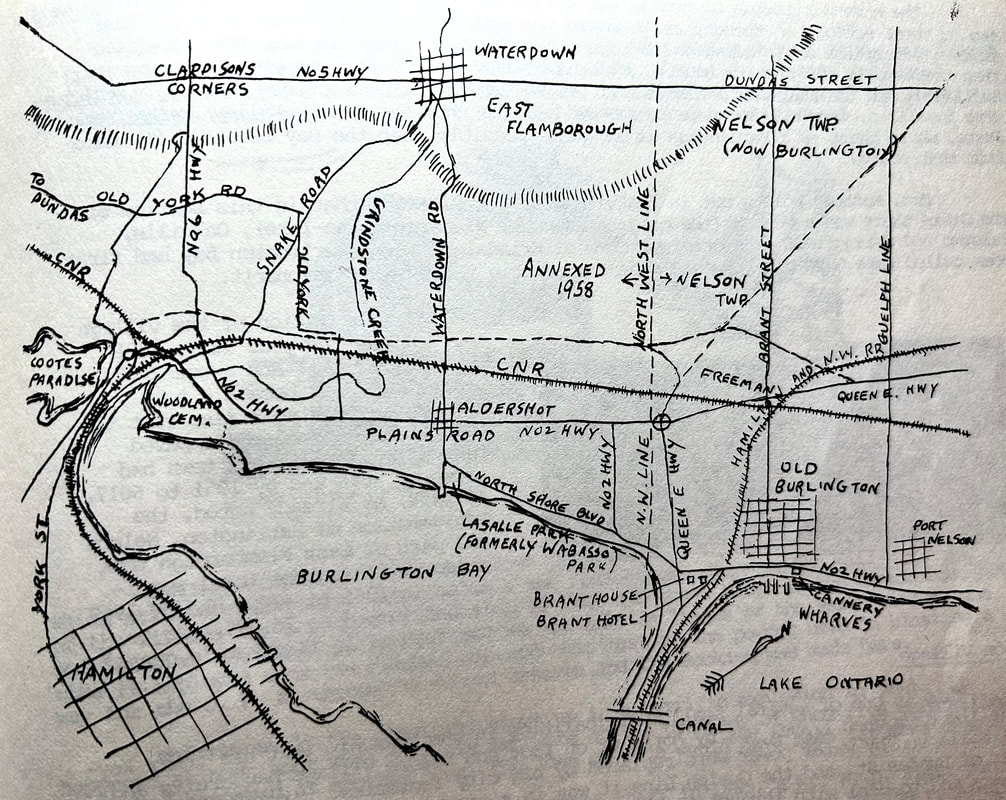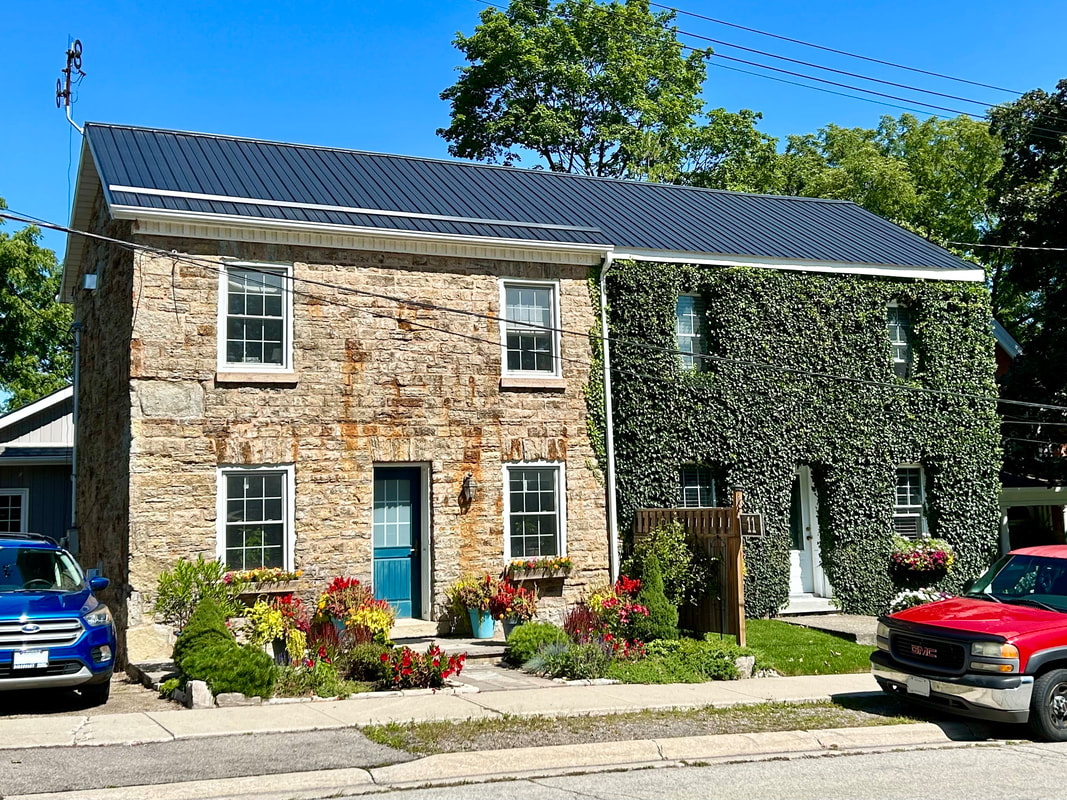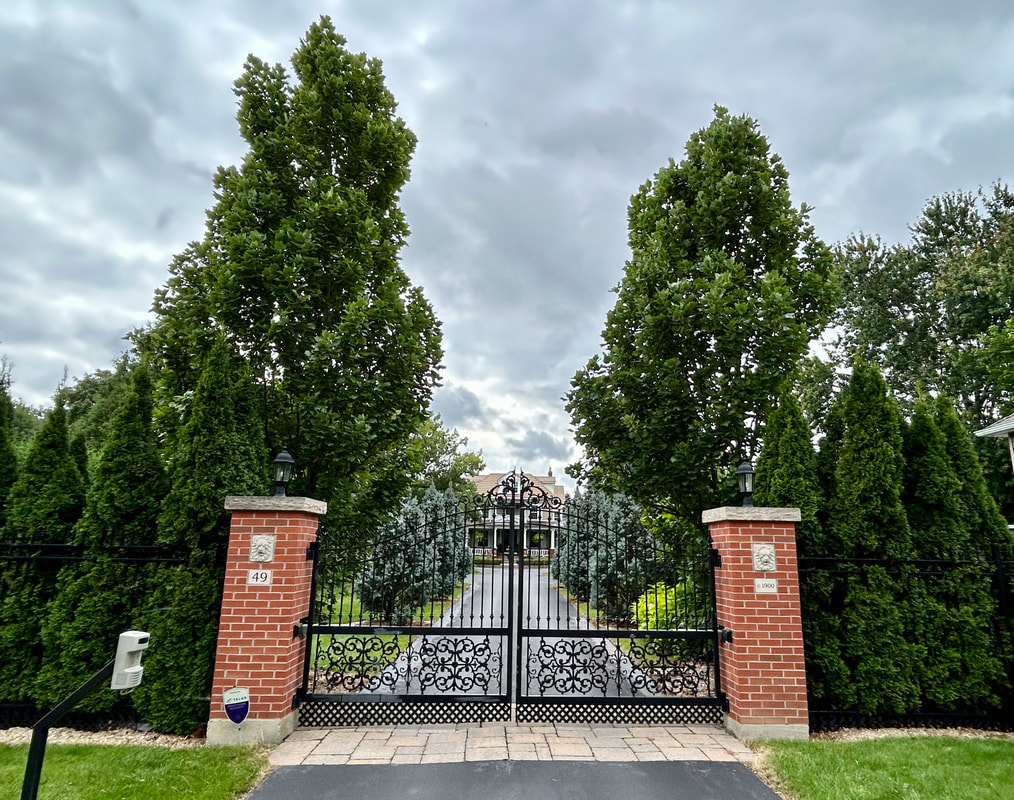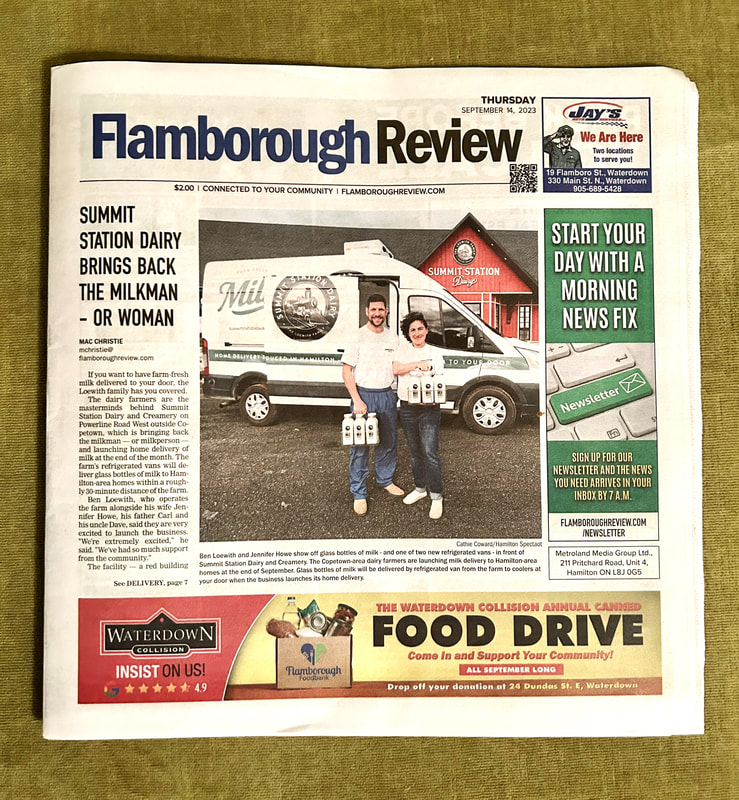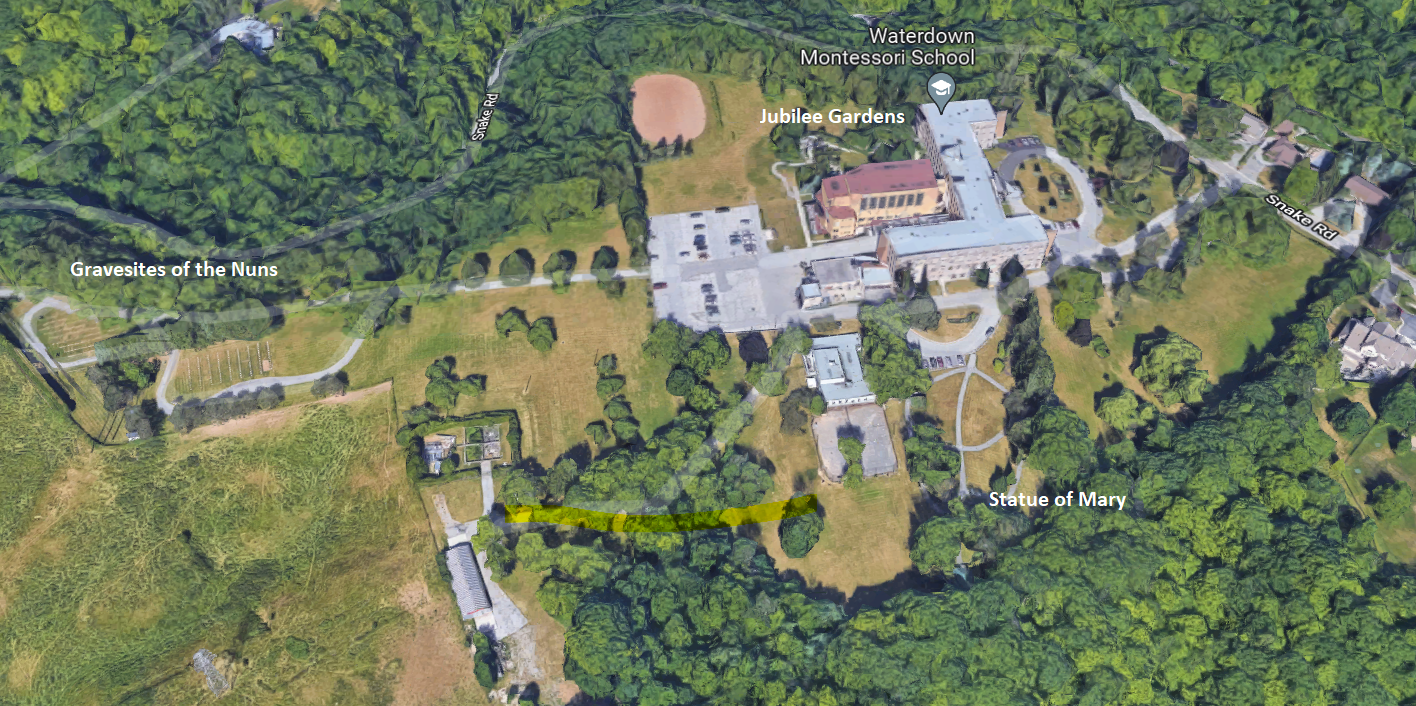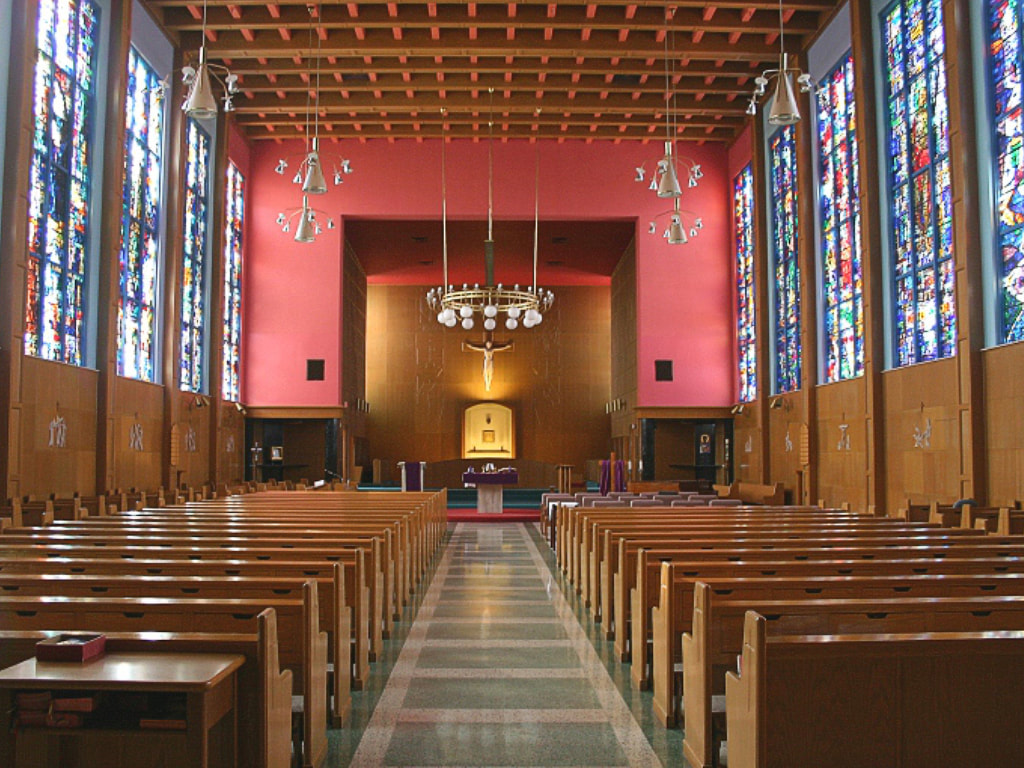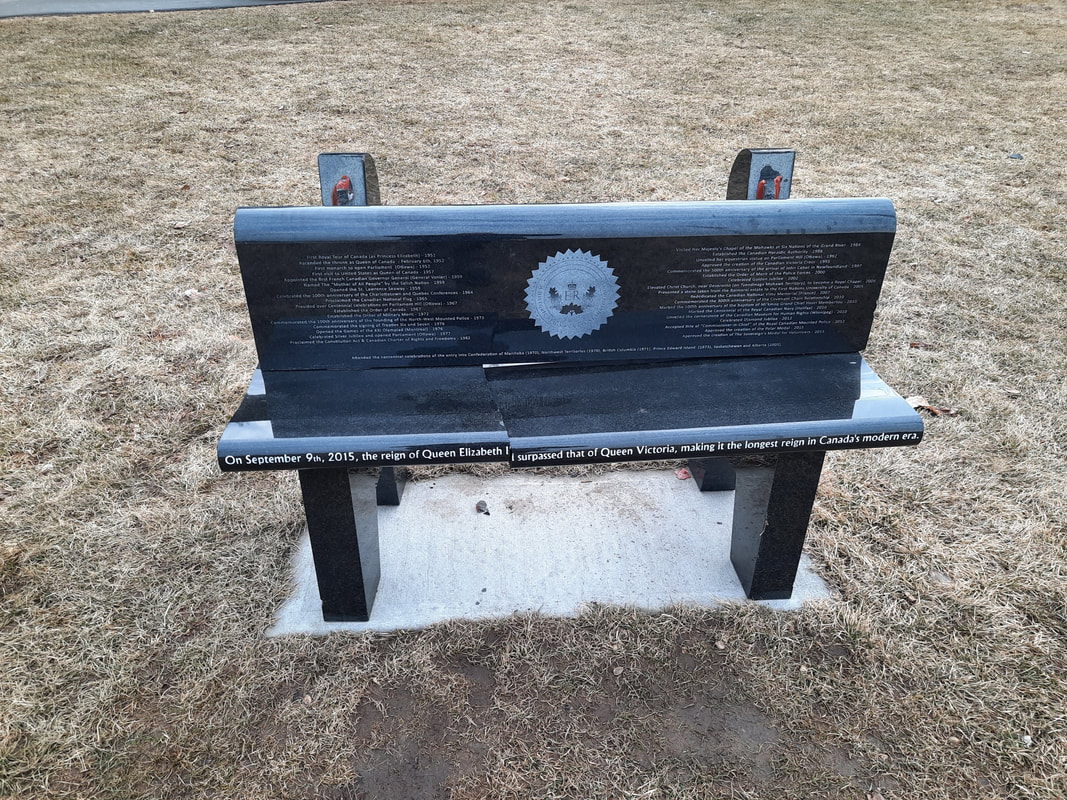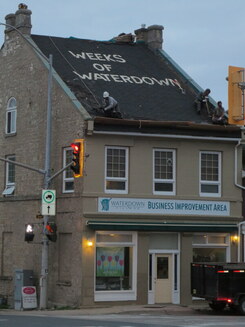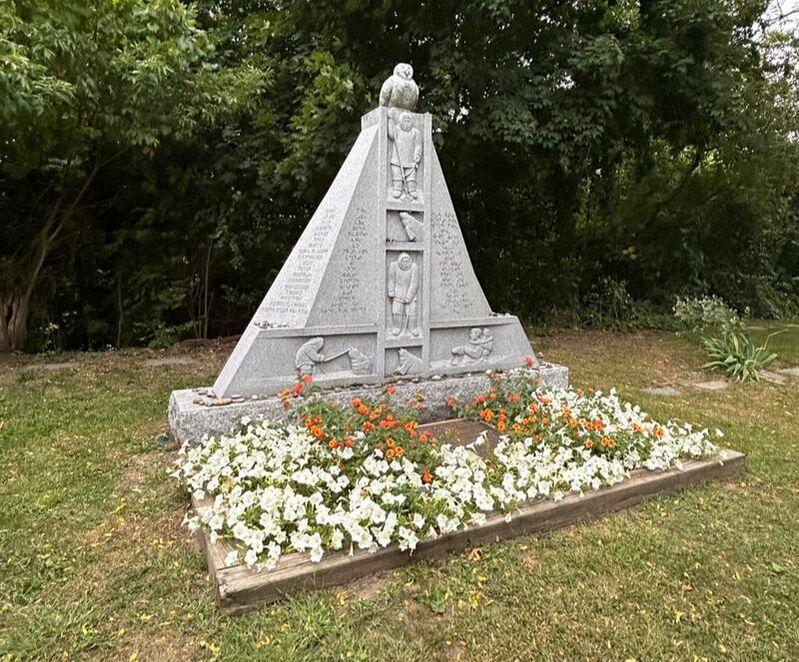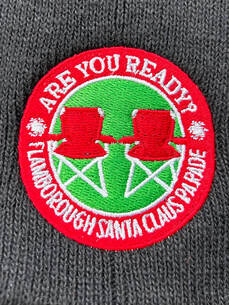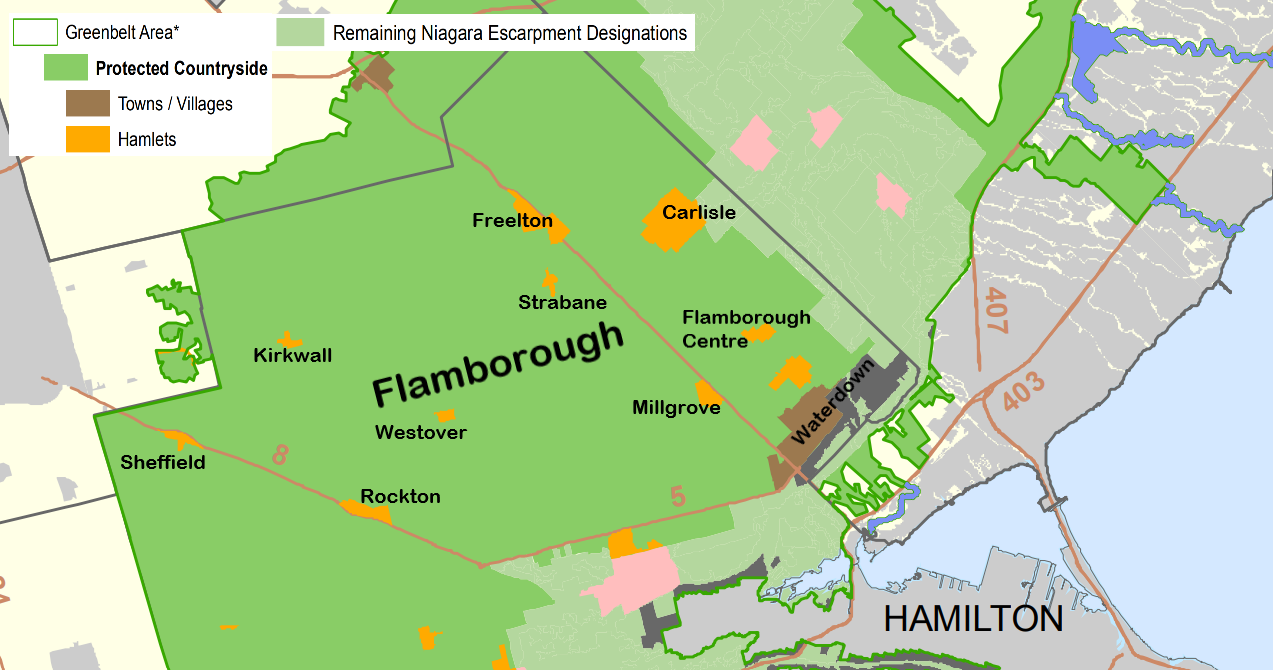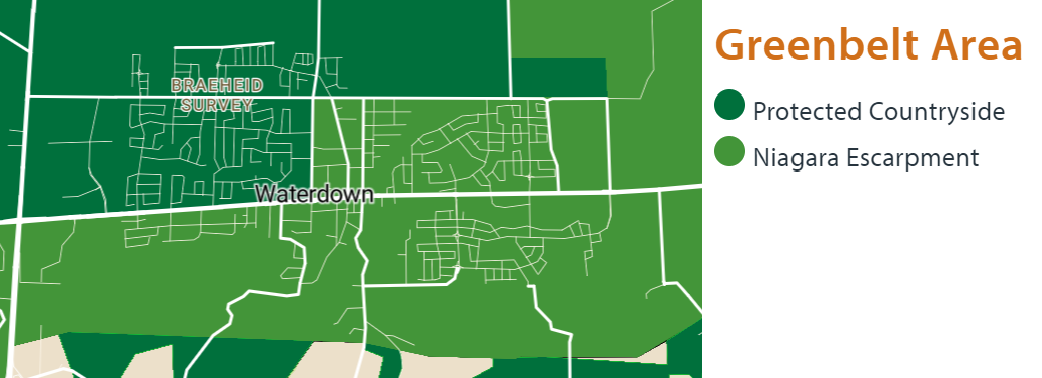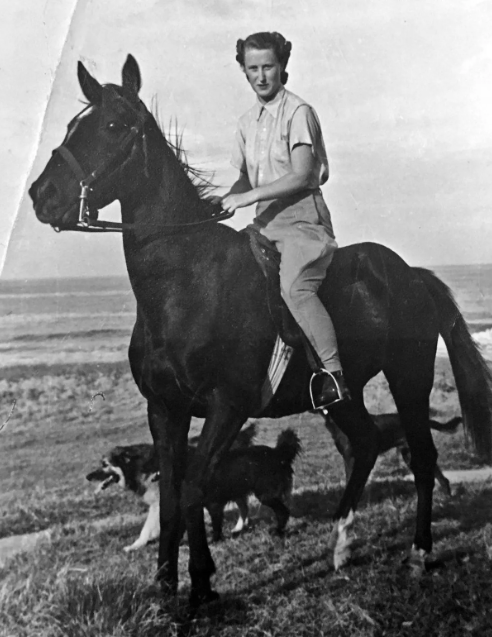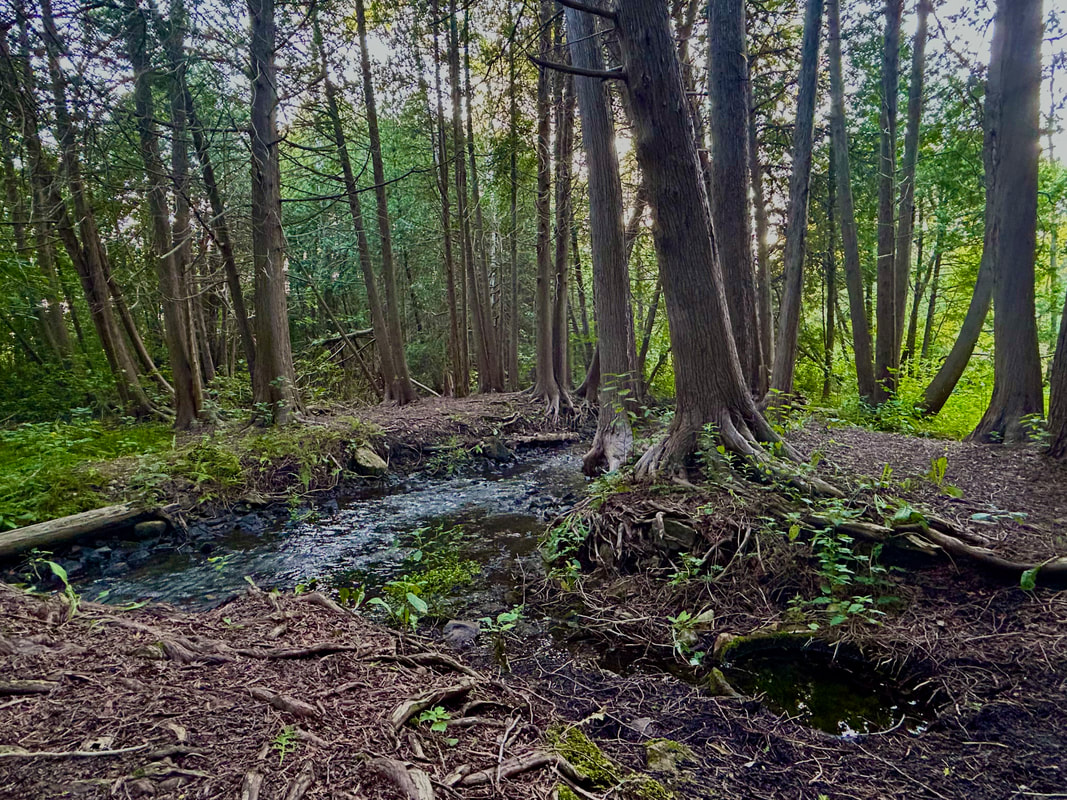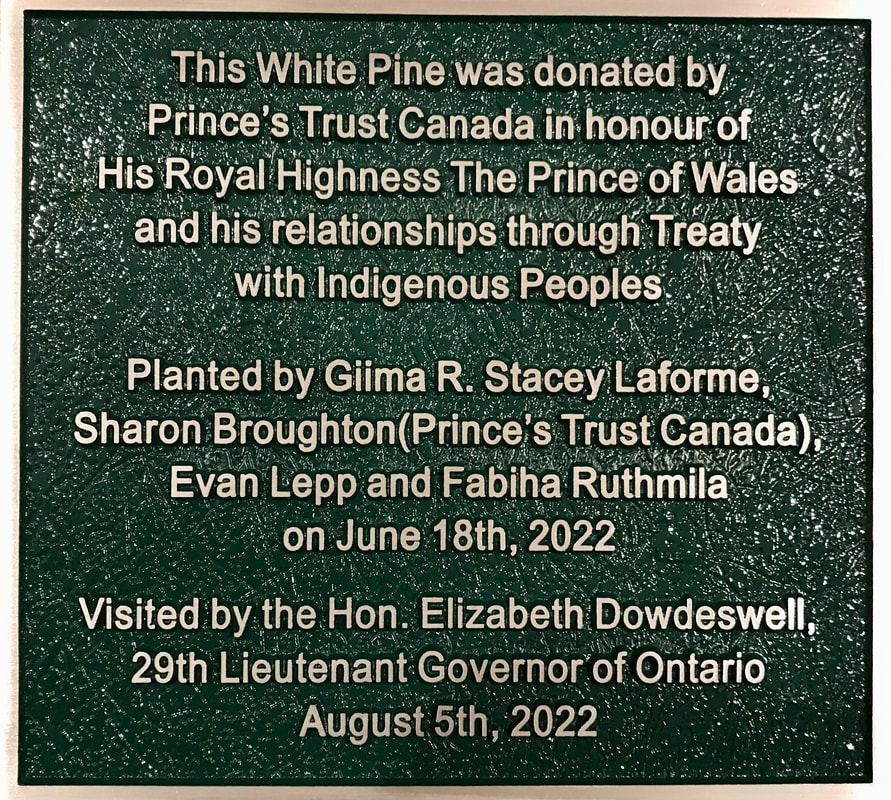The Extraordinary History of Flamborough
|
Videos exploring Flamborough/Waterdown History:
Created for students during the COVID-19 Pandemic (online learning), these videos explore some of the important places and stories from our community.
|
Page 2
|
In Kanyen'kehá:ka (Mohawk), the Niagara Escarpment is referred to as Kastenhraktátye (Along the Cliffs) while it is known in Anishinaabemowin as Gchi-Bimadinaa (The Great Cliff The Runs Along).
Source: Tim Johnson, ed, The Bruce Trail Reference: Edition 30, (The Bruce Trail Conservancy, 2023), 11-2. |
|
Page 2
|
Mabel Burkholder’s History of Central Ontario (Southwestern) records in 1951-2 that Snake Road had “120 twists and turns” and “provided a way to market in Hamilton for early Waterdown residents.
Source: Mabel Burkholder, History of Central Ontario (Southwestern), Historical Foundation (Montreal): 1951-2, 141. |
|
Page 4
|
Mabel Burkholder highlights a reminder of an Indigenous settlement at Lake Medad was a “great stone with several mortar holes in it” which was uprooted and moved to the “rockery of the old Methodist parsonage garden.”
Source: Mabel Burkholder, History of Central Ontario (Southwestern), Historical Foundation (Montreal): 1951-2, 141. |
|
Page 16 (change made in v1.3)
|
New section title: Sacred Caves, Mamagwasewug, and Ancient Trees
Kahkewāquonāby wrote that the caves along the escarpment were inhabited by spirits, and that the sounds coming from the depths of these caves were said to be their breathing.
Other creatures inhabit the area called “Mamagwasewug”. These mischievous creatures are two or three feet tall, and love playing all sorts of tricks on their human neighbours. Kahkewāquonāby reported that he often saw a party of Mamagwasewug paddling a stone canoe in Coote’s Paradise, but whenever anyone tried to approach them, they would easily outpace their pursuers before disappearing into secret caves dug along the banks. Standing out in the Beverly Swamp, a 200-year-old sugar maple has a trunk that is distinctly kinked as if pointing in one direction. |
|
Page 18 (added to the picture caption in v1.5)
|
This replica was presented to King Charles III during his historic meeting with a delegation from the Michi Saagiig Nishnaabeg (Mississauga) Nation at the Palace of Holyroodhouse on July 4th, 2023.
|
|
Page 26 (correction made in v1.3)
|
The territory covered in the 1784 Between the Lakes Purchase covered more than a million hectares. In return for this land, the Anishinaabe were given 1,180 pounds. A violation of the Silver Covenant Chain of Friendship, the Between the Lakes Purchase was later made official within the colonial system by Lieutenant Governor Simcoe as Treaty No. 3 (1792).
|
|
Page 30
|
In her famous diary entries Elizabeth Simcoe refers to the escarpment running north of the Head of the Lake as "Flamborough Head."
|
|
Page 38 (correction made in v1.3 thanks to Wendy Hils)
|
Anne’s husband, Ralph Morden, had been a Quaker who immigrated to Pennsylvania from Cambridgeshire (some say Yorkshire) in 1762.
|
|
Page 39 (correction made in v1.3 thanks to Wendy Hils)
|
Some members of Anne Morden’s extended family held enslaved people and also emigrated to the area. The fates, and names, of the Black People enslaved by the Morden Family are unknown, but local stories speak of them being buried in Christ Church Anglican Cemetery at Bullock's Corners (see section “Christ Church and the Black Morden Plot”).
|
|
Page 49
|
Correction: Rick Hill is a member of the Tuscarora Nation, Beaver Clan.
|
|
Page 58
|
Mabel Burkholder’s History of Central Ontario (Southwestern) writes that Grindstone Creek received its name “. . . because of grindstones being made from the freestone quarries operated along its banks by a Mr. Allan during the War of 1812.”
Source: Mabel Burkholder, History of Central Ontario (Southwestern), Historical Foundation (Montreal): 1951-2, 140. |
|
Page 62-63 (added to v1.4)
|
(addition to) Ebenezer Griffin: The Founder of Waterdown
Ebenezer C. Griffin died at the age of 47 years on October 17th, 1847, and is buried in Waterdown’s Union Cemetery (near the graves of Alexander Brown and Merren Grierson). Buried with Griffin are his wife, Elizabeth Kent (1806-1848) and their children Caroline Augusta (1837-1841) and Charles Wesley (1839-1841). |
|
Page 63
|
Addition:
In her 1969 thesis, An Analysis of the Changing Land-Use Morphology of Waterdown, 1795-1960, Margaret Donkin writes: "The first evidence of the recognition of Waterdown as a separate community is found in the Assessment Rolls for the Township of East Flamborough for 1841. In these rolls there is a marginal note which precedes the entries for those living in lots 6 and 7 in the 3rd concession. The note reads "Village of Waterdown." As this was not yet an organized municipality, the exact location of each assessed person, within those lots is not given, but it is reported that there were 165 persons in the Village and 44 households in all." Despite this passage, Donkin includes in her appendix A Memorial registered between Ebinezer Culver Griffin and Levi Hawk dated December 22nd, 1837, which references the "village of Waterdown." Donkin also writes a description of what Waterdown looked like in its first years:
"In 1841 the settlement was very much in its formative years. Its inhabitants, although mostly tradesmen or artisans, were still highly dependent on the land. Forty four families .l i ved within the boundaries of the future municipality of Waterdown but thirty-two held less than one-half an acre of land which constitutes only a small part of the total area of 400 acres. However, there were in the community thirty-three milch cows and eleven horses. Probably every household had its own vegetable garden. The food the inhabitants were unable to produce, was obtained by bartering their services to the farmers in the surrounding area . . . All the shops both mercantile and artisan grew up along Dundas Street the only road providing communications outside the community. As far as we can tell these shops were originally either log or board siding applied perpendicularly and were one storey high. Many had chimneys and foundations rnade with local stone. The tax rate indicates that a two - chimney structure was rare. All buildings faced the road and were close to the edge of the sixty-six foot road allowance protected only by a low stoop from the right of way. The exception to this condition was an Inn and possibly the same store which still stands at the corner of Mill Street and Dundas Street . Both these structures are stone, probably quarried on James Grierson's land . Many additions and renovations have been made but the two-storey structures we re built sometime between 1840 and 1850 . In a setting of one-story plank structures these must have seemed grand indeed. . . . All these shops and homes stood stark and bare beside the roads, the trees the enemy of the settler ruthlessly cleared away, back to the farm wood lots." Margaret Donkin, "An Analysis of the Changing Land-Use Morphology of Waterdown, 1795-1960," Masters diss. (McMaster University, 1969). |
|
Page 71
|
Addition:
Waterdown and East Flamborough, 1867-1967 records: Another exciting "sport" enjoyed by earlier generations was the cockfights in Gilmer's Carriage Shop (6 Mill Street N). Inside the shop was an area where the planks could be set up as benches around the cockpit dug in the middle of the floor. This was during the 1880s. Peope would arrive at the Grand Trunk Railway Station in Aldershot from as far away as Detroit just to see the coackfights in Waterdown even though they were illegal. The cock pit remained there until the present Bell Telephone Building was erected in 1955." |
|
Page 80
|
Addition:
The first church built by the Roman Catholic congregation was built outside of village limits before they moved into the community. Margaret Donkin, "An Analysis of the Changing Land-Use Morphology of Waterdown, 1795-1960," Masters diss. (McMaster University, 1969). |
|
Page 88
|
Margaret Donkin wrote:
"It is often stated that the first school on the southwest corner of Mill and Dundas Streets was built in 1815. As the teacher was employed and the school built by Brown it is . .. probable that it was Lot 6, which [Alexander] Brown owned until 1837. A second school is mentioned by George Griffin, one of the sons of Ebenezer Culver Griffin, for he writes: " . . . a new school was built if memory serves in 1827 on the corner of Mr . Grierson's farm. The writer was there at school t he first day it was used. It was used for Church purposes by the Methodists on sabbath mo rning and by Presbyterians in the afternoon up to 1843 when their denomination built a church." When the first iteration of Waterdown District High School opened in Sealey Park it sat in the midst of the most densly populated residential section of the village. Margaret Donkin, "An Analysis of the Changing Land-Use Morphology of Waterdown, 1795-1960," Masters diss. (McMaster University, 1969). |
|
Page 90
|
Addition to Figure 54:
Waterdown and East Flamborough, 1867-1967 records: "The [old Drill Shed] was built just like a barn with vertical board and batten siding. There were wooden shutters on the windows that could be lowered by rope to from the inside to protect the glass. When the old high school was still in use, the boys played basketball in the Drill Shed on the original floor board. Then a few years before World War I (about 1911-1913) Tim and Jim Burns made a skating rink in there, and they built a lean-to at one end to make it 10-12 feet longer. Then the 129th Batallion trained there, and the lean-to was removed. Still later the old floor board was removed. The building was used fro concerts . . . And it was used for two or three weeks every spring for training before the soldiers went to summer camp at Niagara." |
|
Page 94 (added to v1.5)
|
Addition:
Meetings of the Orange Lodge were held in Waterdown from 1921-1937, first in the school at Sealey Park before moving to the second floor of the Township Hall on Mill Street. The Waterdown Lodge joined with the Carlisle Lodge in 1937, moving their meetings outside of the village. |
|
Page 101
|
Published in 1970, A History and Atlas of the County of Halton by Halton District Women’s Institute’s Benson S. Case writes about the impact of the infrastructure required by automobile on the region:
This revolution in roadway building has resulted in a steady increase in traffic over the years to the great detriment of the business of railways, both from the standpoint of carrying passengers and also freight. The public prefers traveling by car to the extent that railway travel has been reduced to such an extent that the number of passenger trains has been greatly curtailed or, on many lines, cancelled altogether. As regards freight the same situation applies and except for long distance bulk freight, shippers have found it more convenient to ship by truck with door to door delivery and a minimum of handling. We have thus seen tremendous changes in the way of travel and haulage, and can only conjecture what further changes the future may hold in store for generations to come. Source: Benson S. Case, "A History of the County of Halton," Halton District Women's Institute: 1970, 26. |
|
Page 112 (added to v1.5)
|
Addition:
The Flamborough and Waterdown Agricultural Society held fairs on the site of Mary Hopkins Public School from 1882 until 1918. |
|
Page 113 (added as a footnote to v.1.5)
|
The Clarke family lived north of the village at 153 5th Concession East.
|
|
Page 115
|
After being hand-delivered to homes across the region for well over a century, the last print edition of the Flamborough Review was published on September 14th, 2023, following the sudden announcement of Metroland Media Group's bankruptcy and the shuttering of more than 70 local newspapers across the country.
With the lay off of Mac Christie, the last editor of the Flamborough Review, the Flamborough Review was quietly ended by Metroland on December 31st, 2023. *The short press release ending local print editions across the country was released by Torstar (parent company) on September 15th, 2023. |
|
Page 118 (corrected in v1.5)
|
Correction:
Technically true but the farm that was sold to become the Galactic subdivision (lot 13) was not owned by Ken Harper, but by Russell Harper, Ken’s younger brother. Ken Harper owned 75 acres on part of lot 12, Concession 8 and sold the property to John McNally in 1973, keeping a small ‘retirement’ plot of about 3 acres for himself. Information provided by Sue McNally. |
|
Page 121 (added to v1.5)
|
Addition:
Waterdown and East Flamborough, 1867-1967 records: "William Smith either built new buildings or renovated old ones for the roller rink. William and Dick Smith, sons of the owner, operated the rink and gave skating instruction . . . There were always crowds at the roller rink, and it was dusty and noisy. It was up on cedar posts to level it off because it was built on sloping ground; it was hollow underneath. It really was just an old wood shell, and when about 150 people were skating on there, the roar could be heard nearly a mile away. It was like that of an airplane going overhead. The roller rink burned in the fire of 1922." Lynne Marks writes in Revivals and Roller Rinks that in small-town, Protestant Ontario, roller skating had emerged in the early to mid-1880s as a socially acceptable way for working and middleclass men and women to interact. A supervised space, roller rinks were “generally judged acceptable by respectable small-town middle-class Christians.” Unlike swimming in local rivers, ponds and lakes (typically the prerogative of boys and young men, often naked, in the 19th century), roller skating (and ice skating) necessitated layers of clothing. Marks suggests that, at least for small towns, roller rinks provided a solution to another common problem: young single men spending most of their time in local bars and engaging in toxic behaviour. Interestingly, Marks writes that the positive outlook of these rinks was not as widely felt in urban centres, with some church minsters denouncing them for encouraging male-female flirtation, or even ‘nurseries of hell’! Source: Lynne Marks, Revivals and Roller Rinks: Religion, Leisure and Identity in Late-Nineteenth-Century Small-town Ontario, University of Toronto Press: 1996, 128-130. |
|
Page 129
|
The garden outside the entrance of Notre Dame were dedicated to Sister Mary Gisela Waffler on her 100th birthday (July 21st, 2000).
|
|
Page 140 (Added in v1.5)
|
2005 – Ontario establishes the Greenbelt which emcompasses the entirety of Flamborough, including Waterdown.
|
|
Page 141-142
|
Cindy Mayor captured this image of workers re-roofing the iconic building at the corner of Dundas Street and Mill Street in 2018. Removing the old roof revealed older shingles with the name "Weeks of Waterdown" painted on them (this was the location of the hardware store). "Weeks of Waterdown" was the name of a hardware store owned and operated at that location by Ernie and Irving Weeks. A pilot himself, Erie Weeks had painted the name of the business so the village could be identified by airplanes.
|
|
Page 143 (Added in v1.5)
|
Inuit graves in Aldershot
During the 1950s and 1960s 1,200 Inuit (including children) were sent to Hamilton’s Mountain Sanitorium (“The San”) to be treated for tuberculosis (TB).[1] From the Arctic patrol vessel CGS E.D. Howe would dock at colonial settlements in the Arctic and Subarctic to conduct physical exams (sometimes against the will of their families), including x-rays. If an individual had any signs of TB they were, often forcibly, forbidden from leaving the ship before being transported south for treatment. As Prime Minister Justin Trudeau acknowledged in a formal apology to the Inuit by the federal government in 2019, “The mothers and fathers, brothers and sisters left behind often weren’t told where their loved ones had gone, or for how long. When someone passed away during treatment, they were buried in the south. Only sometimes was it in a marked grave, and only sometimes was their family told.” Aldershot’s Woodland Cemetery is the site of 37 graves of Inuit patients who died while at the Hamilton Sanitorium. In many cases the families of the Inuit buried there, some in gaves shared with multiple bodies, were not told of their loved one’s deaths. Treatments could last well over a year, with little or no communication with patient’s loved ones or home community. A monument, beautifully decorated with Inuit carvings and Inuktitut syllabics, was dedicated near the graves on June 11th, 1995. If known, the names of those buried so far from home were carved into the stone. [1] According to Shawn Selway’s Nobody Here Will Harm You, 51 members of the Cree Nation were sent to the Mountain Sanitorium from Moose Factory General Hospital in October 1954. |
|
Page 143
|
This 2023 photograph of the monument to Inuit buried at Woodland Cemetary was reproduced in the 2024 Final Report for the Office of the Independent Special Interlocutor for Missing Children and Unmarked Graves and Burial Sites.
|
|
Page 146
|
No Maple Leaf Flag for Waterdown District High School
In February 1965 the following letter appeared in the Waterdown District High School newspaper: The Flag Noon on the fifteenth day of February, nineteen hundred sixty-five, was a very important date day in Canadian history—— Canada raised her first Canadian flag. The official flag—raising ceremony was given national television and radio coverage. Everywhere in Canada the event was marked by some sort of ceremony, everywhere in Canada except of course for Mr. J. Diefenbaker's private residence, Maple Leaf Gardens and of course Waterdown District High School. Why? Schools in Burlington and Hamilton raised the Maple Leaf, why not us? Because dear readers through no fault of the office we had no flag! The school board had neglected to see to it that all schools had a flag in time for the raising! It seems to me someone should raise some of the dust and cloud a few of the bifocals at the next board meeting. —member of the School Bored [sic] |
|
Page 152
|
Additions: The 2023 logo for the Flamborough Santa Claus Parade highlighted Waterdown's unique tradition of residents putting out their lawn chairs days in advacne to hold their spots along the parade route.
As well, Ron Rickli, Garry Kokayko, Glenn Sherwood, as well as Mary Lamb worked to restart the Flamborough Santa Claus Parade in 1994. |
|
Page 157 (added to v1.5)
|
Leaving provincial politics, McMeekin was elected Councillor of Ward 15 (City of Hamilton) on October 24th, 2022.
|
|
Page 158 (Added in v1.5)
|
The World's Largest Greenbelt
In 2005, Premier Dalton McGuinty's government passed Bill 135, the Greenbelt Act (2005), creating the world’s largest protected greenbelt, encompassing the entirety of the Town of Flamborough, including its principal community of Waterdown. Flamborough remains the largest section of the greenbelt in the City of Hamilton, encompassing the most conservation land at the Head of the Lake. |
|
Page 169
|
Derecho Hits Waterdown
May 21st, 2022, saw the region hit by an intense derecho which swept across Southern Ontario leaving ten people dead and a swath of destruction. Extensive damage was reported across Flamborough, with many trees uprooted and power cables destroyed. Winds hit 120 km/h and included an EF-2 tornado in Uxbridge. |
|
Page 169
|
Platinum Jubilee of Queen Elizabeth II
Thanks to Andrew May and Connor Skingley at Tea at the White House, Waterdown joined the rest of the Commonwealth — one of three Canadian centres to do so — in lighting an official Platinum Jubilee beacon as part of international celebrations to mark the seven-decade reign of Queen Elizabeth. Around 200 community members gathered on June 2, 2022, at 35 Main St. N. for a day of celebration that included Town Crier Allan Freeman issuing a specially created proclamation, music by Sax ’n Sync saxophone quartet and an appearance by Hamilton Police Service Mounted Unit. People of all ages took turns taking pictures with the horses while enjoying a variety of tea and scones provided by Tea at the White House. |
|
Page 169
|
The Mizzi Asteroid
Designated by NASA as 10492 Mizzi (1986 QZ1), the 9.7 kilometre diameter celestial body was named after Waterdown’s Ed Mizzi in 2023 to honour his lifetime of work in the field of astronomy. A former high school teacher and president of the Hamilton chapter of the Royal Astronomical Society of Canada (RASC), Mizzi has dedicated his life to educating people about the stars. Some of his initiatives include setting up telescopes in Burlington’s Spencer Smith Park. With his own backyard astronomical observatory at his home on Laurendale Avenue in Waterdown, Mizzi continues to explore the university. At the 2019 General Assembly of the Royal Astronomical Society of Canada awarded Mizzi the RASC National Service Award. The Mizzi Asteroid has a 36-hour day and can be found in the asteroid belt between Jupiter and Mars, 600 million kilometres from Earth. |
|
Page 180-181 (added to v1.5)
|
Margaret Cooper and Bletchley Park
Sworn to secrecy by the British Government, Carlisle’s Margaret Cooper spent the Second World War at the ultra-secretive Bletchley Park, the centre of Allied code-breaking during the Second World War. Born Margaret Elizabeth Douglas in Punta del Este, Uruguay, to Argentinian parents, she moved to London and lived through "The Blitz” and was called up in 1941 and enrolled in the Women's Royal Naval Service. (nicknamed “The Wrens”). Transferring to Bletchley Park, Cooper was assigned to one of its huts to work with a Bombe, an electro-mechanical device used by British cryptologists to help decipher German Enigma-machine-encrypted messages. In 1942 she followed the Allies' destruction of supply ships to the Afrika Korps in Libya, becoming an assistant to Frank Birch, head of the naval section in Hut 4. In 1944 Cooper was transferred to Plymouth to serve as a liaison with Bletchley on U-boat activity during the D-Day landings. In 1942 Margaret briefly met Craig Cooper, who was serving with the Royal Canadian Airforce, at the Bletchley Railway Station. While they did not exchange names at the time, Craig established contact with Margaret after sending a letter addressed to "the blonde Wren from Argentina on the platform at Bletchley station". Following the war, the two were married and moved to Canada. Settling in Carlisle in 1947, the couple purchased the 65-acre Cherry Hill Farm on the 8th Concession (Craig had lived in Waterdown for a time while his father was principal at Waterdown High School). Margaret lived at Cherry Hill Farm until 2001 when she moved to Waterdown following her husband’s death (she lived in McGregor Village at 47 Main St North). Interestingly, Cooper did not tell her family and friends (including her brother who served as an intelligence officer) about her wartime service until Britain's Official Secrets Act was lifted in the 1970s. The British Government did not formally recognize the work done at Bletchley Park until 2009 – that year Cooper received a letter from British Prime Minister Gordon Brown recognizing her war service. Margaret Cooper died in 2016 at the age of 98. |
|
Page 184
|
Carlisle's Community Hall (addition):
Roller skating was hosted in the hall to pay off the mortgage. Source: Lisa Jefferies, Flamborough at a Glance: #6 (Carlisle), Flamborough Hsitorical Society, 2019. |
|
Page 197 (added to v1.5)
|
A sacred spring at the end of the world
For many years (2012-present day) students from Waterdown District High School have embarked on the "Flamborough Roadtrip" - a daytrip exploring various historical sights in their region. One of the student's favourite spots was traveling to "the end of the world" (i.e. the end of Centre Road which heads north from Waterdown - very few people travel its entire length). Disembarking the schoolbus, students often find a nearby spring tucked amongst cedar trees (one of the four sacred medicines to many Indigenous civilizations). The Indigenous stories attached to this very special space are unknown, however settlers to the region soon recognized its importance. Currently named "Maddaugh Spring," a handmade sign gives another story: MacPherson's Spring at Grasshopper's Corners At the end of MacPherson's Lane where it joins the town line and Maddaugh Road can be found MacPherson's Spring. The bridge above once of wood is now cement. Until a few years ago a tin cup hung on the side of the bridge for passers-by. The protective wooden barrel that John A. sunk around the spring has been replaced by a high, battered ring of metal. But the water is as pure and as never-failing as it ever was. |
|
Page 202 (correction made in v1.3 thanks to Wendy Hils)
|
The first mill built along Spencer’s Creek (then called Flamboro Stream) was constructed by Jonathan Morden (nephew to Anne Morden, see section “Anne Morden”) in 1798 on land he purchased from Peter Russell. There is evidence in the West Flamboro Township Centennial book that Jonathan Morden enslaved at least one person.
|
|
Page 213 (correction made in v1.3 thanks to Wendy Hils)
|
James Webster was one of the first Europeans to settle in the area, arriving between 1819-22.
|
|
Page 218 (correction made in v1.3 thanks to Wendy Hils)
|
The map depicted here was drawn by Wendy Hils, Christ Church Flamborough Cemetery Board.
|
|
Page 220 (added as a footnote to v1.4)
|
Efcom Ltd. closed its doors on September 23rd, 2022.
|
|
Page 225 (added to v1.5)
|
Marjorie Clark’s Our Village of Morriston (Guardian Press, 1982) claims that Brock Road (originally called Aboukir Road) was originally an Indigenous pathway that included two Indigenous villages (Mississauga?) in Morriston during the early 19th century.
|
|
Page 249
|
The final act of Mark Shurvin, as Mayor of Flamborough, was to sign the authorization to transfer the Municipal Cemetery at Bullocks Corners to Christ Church Flamborough. (source: Wendy Hils)
|
|
Page 259 (added to v1.4)
|
Added to "Viceregal Visits to Waterdown":
June 18th, 2022 – The Hon. Elizabeth Dowdeswell, 29th Lieutenant Governor of Ontario, was meant to travel to Waterdown to dedicate, along with Giima Stacey Laforme, the Waterdown Platinum Jubilee Treaty Forest. Forced to cancel due to illness, Dowdeswell had a message read at Joe Sams Park by Fabiha Ruthmila and Evan Lepp. Ruthmila and Lepp joined Giima Laforme and Sharon Broughton (CEO of Prince’s Trust Canada) to plant a White Pine in honour of King Charles III’s (then Prince of Wales) Treaty relationship with Indigenous Peoples in the centre of the Treaty Forest. Lieutenant Governor Dowdeswell visited the Treaty Forest (stopping for High Tea at Waterdown’s Tea at the White House) on August 5th, 2022. |

